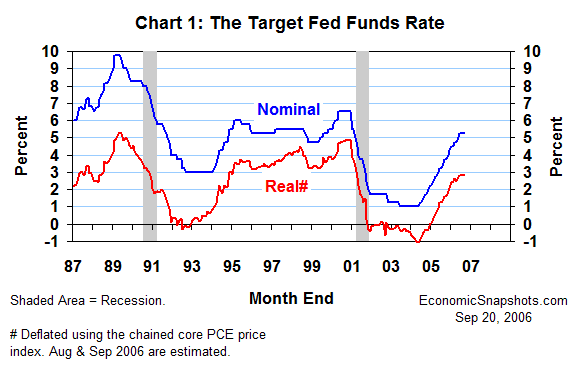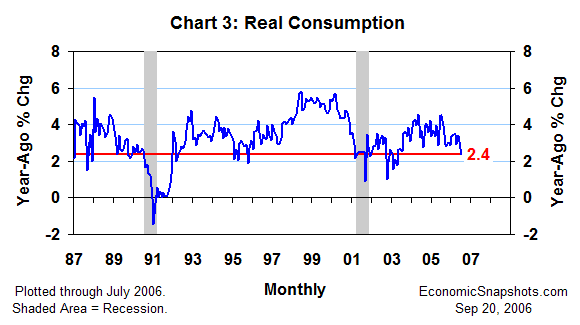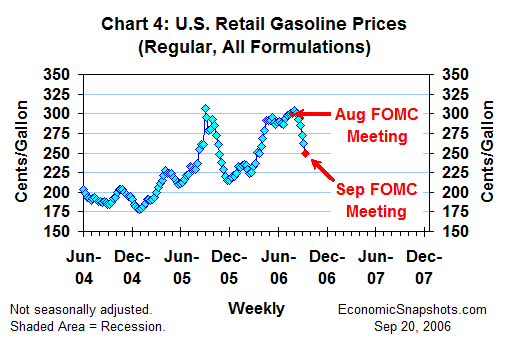
| Back to Index |
September 20, 2006 – The FOMC voted today to leave its target Fed funds rate unchanged at 5.25% – continuing the “pause” begun at its last policy meeting in August (Chart 1).

Before August, the FOMC had been steadily tightening U.S. monetary policy, raising its Fed funds target by a total of 425 basis points in a long string of 25 basis point increments.
As in August, Richmond Fed President Lacker voted against today’s policy decision. On both occasions, he would have preferred to raise the Fed funds target by another 25 basis points, to 5.5%.
According to the FOMC’s post-meeting policy statement, the latest trends in core inflation (excluding food and energy prices) have continued to exceed FOMC members’ comfort range (Chart 2).

However, the FOMC majority still expects the continuing “moderation” in real demand growth (especially real consumption growth, Chart 3) to rein in inflation “over time”.

“The reduced impetus from energy prices” was also cited as a favorable factor in the inflation outlook. That’s a new development since the August FOMC meeting (Chart 4).

The FOMC repeated its warning that “some inflation risks remain” – an indication that the FOMC majority remains more inclined to tighten than to ease in coming months. Either excessively strong real demand growth or a significant deterioration in the inflation readings could prompt further tightening action.
However, as long as real demand growth seems to be settling in on a “sustainable” trend (that’s presumably about 3% to 3.5%) and the inflation indicators don’t seem to be taking a serious turn for the worse, the FOMC majority still seems to be ready to leave U.S. monetary policy unchanged for an extended period.
Bottom line: No change in the outlook for U.S. monetary policy.
Suzanne Rizzo